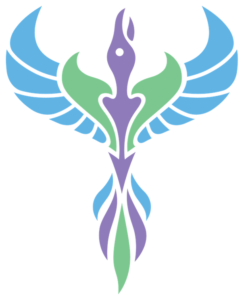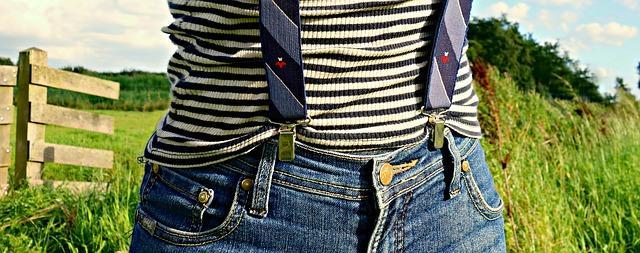Posts Tagged ‘back pain’
Tightness in the Shoulders and Upper Back
Chronically tight shoulders
What does it mean to have chronically tight shoulders? It means leaving work every day with that twinge of tightness at the base of the neck; that slight bit of pain that can be felt when we articulate our shoulders overhead. We become so used to it because we can function without fixing it, but is this how we go about other problems? Maintenance of our body is like the maintenance of a house or car: pain and stiffness are the signals that tell your brain something needs to be fixed.
The role of the trapezius
The trapezius is essentially the central muscle in the upper back, and it is divided into three parts: upper, middle and lower. The upper trapezius connects from the lower back of the head to the clavicle and is the most active in a sit-heavy lifestyle. Are you familiar with that hunched over look that is so common in the office? It is a definitive posture of the desk-bound worker in which the upper trap is constantly contracted, pulling the shoulders up and inwards. Simultaneously, the middle and lower traps, which usually play a role in shoulder stabilization, are not being called upon to do anything so they weaken from lack of use, further shifting the burden of stabilization and articulation onto the upper trap. And voila, your shoulders are stiff and sore.
Shoulder tightness is a vicious cycle
If we let it go on long enough, chances are that something will give, and it could happen with even the most basic daily motion. Fortunately, chiropractic is tailor made for addressing tight shoulders. Because the problem is of a mechanical and muscular nature, we focus on releasing them muscles of the upper back from tension by using trigger point therapy. Using chiropractic adjustment, we restore balance to the thoracic spine, removing nerve irritation and improving range of motion. From here, it is a matter of strengthening and stretching the right muscles to ensure that they work in harmony to help you maintain good, pain free posture. Shoulder and upper back tightness are not normal and should not be treated as such; if you need help reversing this vicious cycle, give our office in Park Slope a call to schedule an appointment today.
Dr. Karen Thomas, D.C.
The Importance of the Posterior Chain
The posterior chain is a group of oft-neglected, yet crucial muscles that define the backside of your body, including muscles of the lower back, the glutes, hamstrings and calves. Sit-heavy lifestyles conspire to wreak havoc with this muscle chain, leaving our hip flexors and quads shorter and tighter and creating a domino effect which destabilizes the lower back. The glutes are key muscles in this process- when they become weak or inhibited, it is a clear sign that the posterior chain is at least partially compromised. Range of motion must be accounted for somewhere, and the lower back, a region already well known for the burden it supports, is called upon to take on even more responsibility. While rotating and lifting should be done with the hips, many people use their lower backs to initiate these movements, which is a perilous proposition.
No matter the object, whether it be a cat toy or a dumbbell, lifting is an action that should be performed with the legs and not the back. To be more specific, it should begin by sitting or squatting with the hips to lower, then lifting with a hip thrust forward. At Community Chiropractic & Acupuncture, we focus on helping people restore function and range of motion to the posterior chain so that the hips can be fully utilized as the powerful force that they are.
This means relearning what has been lost: proper body mechanics so that you know how to move. This means awareness that sitting for hours on end causes chronic tightness and the shortening of muscles that need to be mobile. This means treating those tight muscles with soft tissue work and, finally, it means strengthening and stretching these muscles regularly to keep them in prime condition so that they don’t burden the lower back further. All of these elements will make a difference in pain that is caused by the lower back compensating for muscles that are firing short in the posterior chain.
Dr. Karen Thomas, D.C.
Healthful Gardening
Gardening should be equal parts happy, health plants and happy, healthy you! The gardening season brings people out of their winter skin and for this we are grateful at Community Chiropractic and Acupuncture. Chiropractic and gardening are symbiotic: we often advise people to get moving for the sake of their health and this is exactly what gardening does. On the other side of the coin, many of the motions involved in gardening can lend strain to the body, especially the spine.
Here are some back-saving tips to help you enjoy gardening season without ending up sore at the end of the day.
- Warm up by stretching: Let us help you develop a 5 minute (or less) routine for the shoulders, back and hips that will keep you limber against the twisting and bending movements that are so frequent. Gardening is already a ritualistic endeavor to many; adding in stretching to the ritual will enrich the experience.
- Take frequent breaks: Kneeling in one patch pf the garden for an extended period of time will allow muscles to tighten and the spine to stiffen. If you can, take a break every now and then to admire your work and hydrate, especially with the warm weather. Mixing up your tasks is a great way to keep on the move.
- Gardening often requires heavy lifting, so be sure to lift properly. It can never be said enough: lift with the legs, not the back.
At our office in Brooklyn, we would like to see everyone enjoy a productive, pain-free gardening season. To this end, we can identify and correct subluxation that may be contributing to pain or stress to one part of the body. If you are already suffering from injury, we can speed the healing process with healing modalities that include acupuncture and hands on treatment of the tissues and ligaments.
Call our office in Park Slope at (718) 398-3100.
Dr. Karen Thomas, D.C.
Posture at the Computer
How do you sit at work? Do you heed conventional wisdom and “sit up straight,” or are you right now leaning toward the screen as you read, with back rounded and the head casting disproportionate pressure on the neck and shoulder muscles, asking them to compensate? Even if you immediately straightened up upon seeing the word posture, chances are you will be slouched down or slumped forward five minutes after you have finished reading. This plays on the tendency of humans toward laziness: sitting is the most conducive position to poor posture.
- Head facing straight forward, centered over the spine. If needs be, adjust the height of your monitor to encourage this position.
- Back straight with buttocks touch the back of the chair and your shoulders back in a relaxed position.
- If possible, place a pillow in the back of the chair to encourage the lordotic curve.
- Weight of torso distributed evenly between the hips (not leaning to one side).
- Legs at 90 degrees or slightly higher.
- Feet rested flat on the floor without too much pressure being pressed through them.
As you work in front of the computer for hours at a time, you are encouraging muscular imbalance and poor curvature. This can leave you with muscle strain, headaches and back pain. At the risk of sounding like a broken record, I believe a reminder of good posture is always in order. Try to remind yourself of this position as often as possible, especially when you catch yourself slumping.
For help on posturing throughout the day, call our office in Park Slope at (718) 398-3100
Dr. Karen Thomas, D.C.
Tips for a Great Soak
Not all baths are created equal. While the benefits of a hot bath can be felt instantaneously for most back pain sufferers, you can maximize your time in the bath tub with a few simple tips.
- The right water temperature is not as hot as you can handle: warm is better. Too hot can create interference in the nervous system and make it difficult to sleep afterwards.
- Stay cool: keep your head, hands and feet out of the water if possible to shed some of the heat so that you don’t feel fully pruned afterward.
- Stay hydrated:
- Treat yourself: use your bath time to massage tense areas, stretch your shoulders and move your neck.
- Make the bathroom as relaxing as possible: therapeutic oils and bath salts create an atmosphere that eases the mind and soul. The more relaxed you are, the easier you heal.
Baths are a good way to kiss stress good bye and the benefit to the body is undeniable: it is one of the oldest therapeutic techniques in the world. At Community Chiropractic & Acupuncture, we believe that you can harness the power of warm water to achieve measurable improvement in your back’s condition. Call our office in Brooklyn at (718) 398-3100 to schedule an appointment and find out how you can start using your own home to reduce your back pain.
Dr. Karen Thomas, D.C., L.Ac.
Promote Spinal Balance with a Walk
Walking your way to a more healthy life is not as far-fetched as it might feel. During a busy workweek, it is easy to get stuck in a routine that looks, at its most abstracted form, like: waking up àcommuting à working à relaxing on the couch à and back to bed, with allowances for eating. Often there is not enough time or motivation to make it to the gym; this is where a quick walk can rescue your spine on a lazy night. Taking 30 minutes out of an evening and dedicating them to a walk makes all the difference in the world: it gets your joints moving, muscles and bones strengthening, and circulation flowing. For people with back pain, the boon can be even greater. Here are some of the cut and dried benefits of a walk:
- Reduces back pain: mild endorphin release helps manage pain.
- Helps manage weight: body weight is the number one factor that burdens adult spines.
- Increases range of motion: by allowing the spinal joints to move, simultaneously making you more resistant to injury.
- Improves circulation: possibly the property that helps the most people. Walking allows your blood to get flowing throughout the entire body, bringing oxygen and nutrients to cells who have been suffering from stagnation on the couch.
Finding the time or initiating the desire to walk daily is often difficult when you are at the mercy of life’s many engagements. At Community Chiropractic & Acupuncture of Park Slope, we can help you make minor lifestyle adjustments that will compliment our chiropractic and acupuncture treatments on the path to achieving any health goal you have set for yourself. Call our office in Brooklyn at (718) 398-3100 to schedule an appointment today.
Dr. Karen Thomas, D.C., L.Ac.






